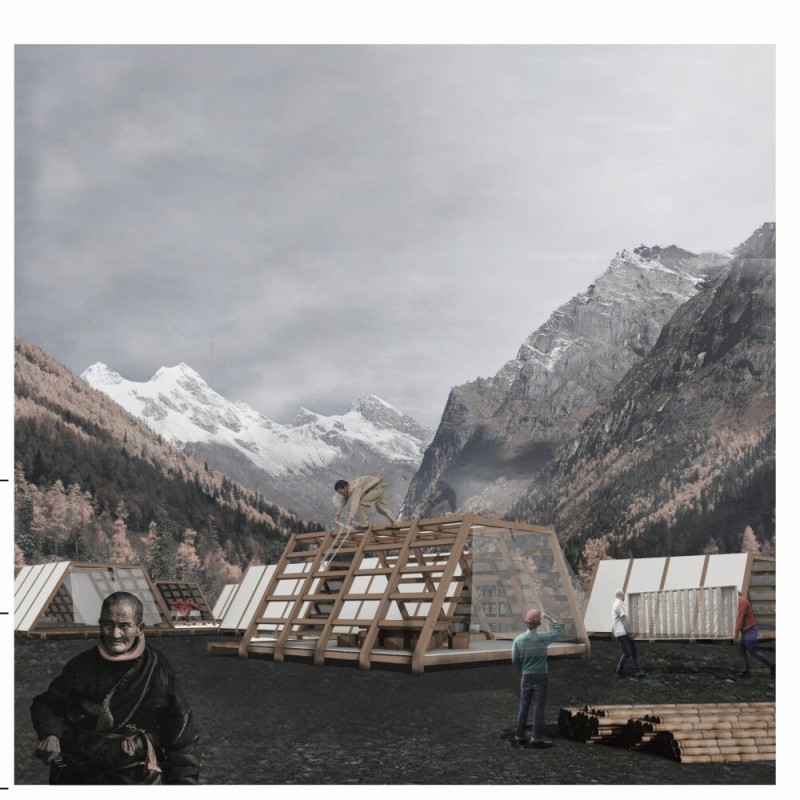5 key facts about this project
"The Reconstruction of Living" focuses on the needs of communities impacted by natural disasters, particularly in high-altitude locations such as Tibet. It presents a multi-functional design that prioritizes modularity, creating structures capable of providing immediate shelter and longer-term habitation solutions. The aim is to blend practical living spaces with community interaction, addressing the complex challenges faced by those displaced.
Modular Structure
The project employs a modular construction method that allows for great flexibility in design. Each module can serve different purposes, such as housing, education, and healthcare. This adaptable approach enables quick responses to changing community needs, fostering social connections among residents in the process.
Bionic Design Principles
The design draws inspiration from bionic architecture, incorporating shapes similar to honeycombs. This design choice makes construction efficient and enhances the buildings' structural integrity. By mimicking natural forms, the approach promotes sustainability while ensuring safety in regions prone to earthquakes.
Material Selection
Fast-growing wood is the main construction material used in the design. This choice is practical, lowering costs while also supporting environmental sustainability. The lightweight properties of wood, together with the hexagonal shapes of the modules, bolster their mechanical strength, which is important for safety in seismic areas.
Climate Adaptability
A thorough understanding of the local climate influences the design of these structures. Factors such as sunlight, rain, and snow are considered in the planning. This careful attention allows the buildings to perform well in various weather conditions. The organization of communal spaces takes advantage of natural light and airflow, improving the overall living experience for residents.
The roof design features careful slopes and channels that manage rainwater effectively. This detail not only supports sustainability goals but also helps maintain the functionality of the structures over time, ensuring that they remain resilient in challenging climatic environments.



















































